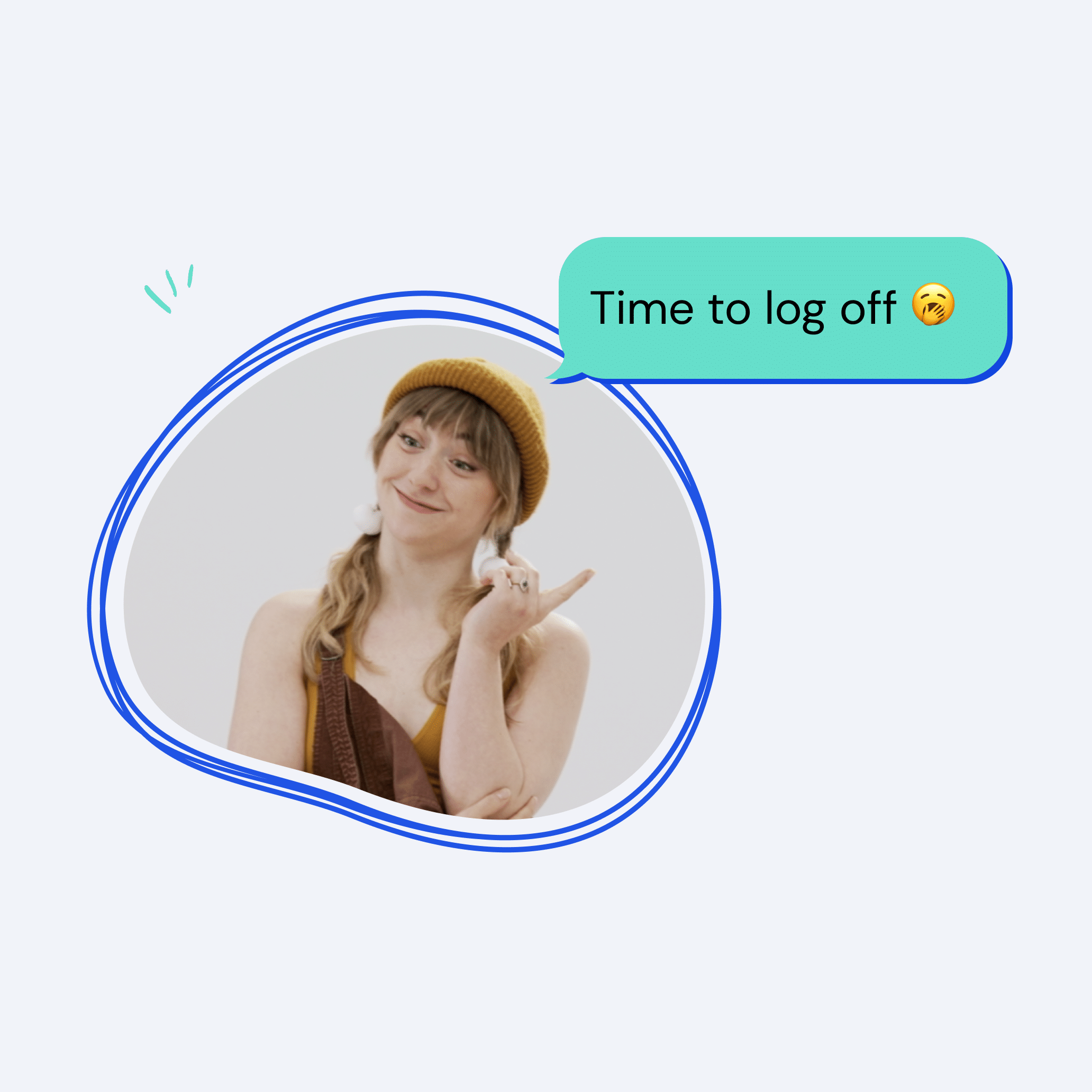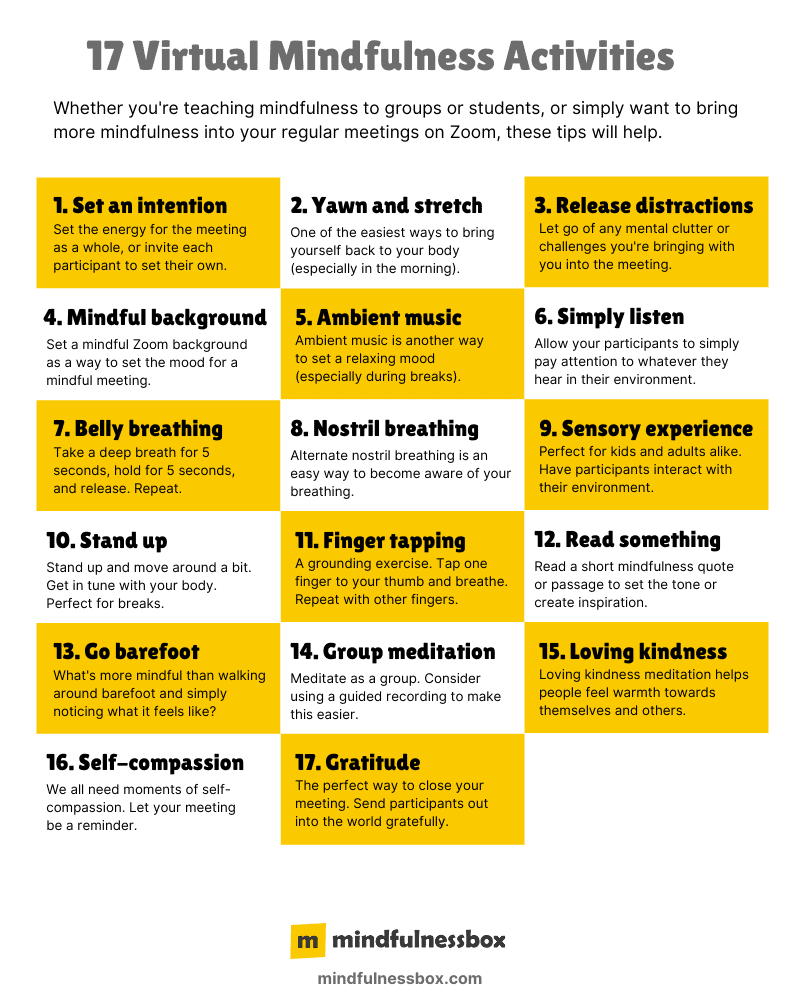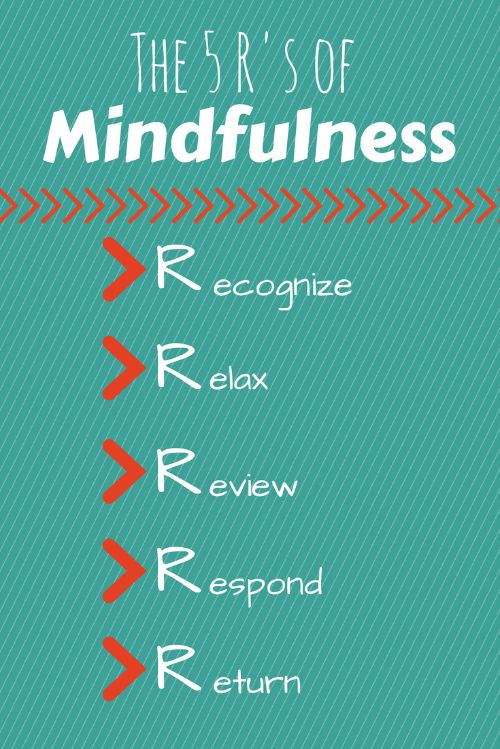In today's fast-paced world, cultivating mindfulness can feel like a Herculean task. Fortunately, technology offers a surprising ally in this pursuit. This article explores a range of digital tools designed to support your mindful journey, from meditation apps and guided visualizations to mindfulness trackers and journaling platforms. We'll delve into the features and benefits of each, helping you choose the resources best suited to integrate mindfulness into your daily life and achieve a greater sense of calm and focus. Discover how technology can empower your path to inner peace.
Digital Tools for Cultivating Mindfulness
Mindfulness Apps: Your Pocket-Sized Meditation Guide
Mindfulness apps like Headspace, Calm, and Insight Timer offer guided meditations, breathing exercises, and mindfulness courses tailored to various needs and experience levels. These apps provide structured practices to help you develop a consistent mindfulness routine. Many offer features like sleep soundscapes, music for focus, and even progress tracking, allowing you to monitor your journey and stay motivated. The convenience of having these tools readily available on your phone makes incorporating mindfulness into your daily life much easier, even during busy periods. They cater to beginners through advanced practitioners with varied content and personalized recommendations.
Journaling Apps: Reflecting on Your Inner World
Digital journaling apps such as Day One, Journey, and Reflectly provide a safe and convenient space to record your thoughts and feelings. The act of journaling itself can be a mindful practice, encouraging self-reflection and emotional processing. Some apps use AI-powered prompts to guide your reflections, prompting you to focus on specific aspects of your day, your emotions, or your gratitude. This functionality can be incredibly helpful in identifying patterns, improving self-awareness, and fostering emotional regulation. The ability to search and organize your entries over time can also offer valuable insights into your personal growth.
Noise-Cancelling Headphones: Creating a Sanctuary of Calm
While not strictly a "mindfulness app," noise-canceling headphones play a crucial role in creating the right environment for mindfulness practices. By blocking out distractions from the external world, these headphones allow you to fully immerse yourself in guided meditations, calming music, or simply the quiet stillness of your surroundings. This reduction in environmental noise can significantly enhance your ability to focus on your inner experience, fostering a deeper sense of presence and tranquility. They are especially beneficial in noisy environments where achieving quiet contemplation is difficult.
Timers and Reminders: Establishing a Consistent Practice
Integrating mindfulness into your daily life requires consistency. Using timers and reminders on your smartphone or through dedicated apps can help you establish a regular practice. Setting reminders for short meditation sessions throughout the day can make mindfulness more accessible and less daunting. This consistent engagement, even in short bursts, contributes significantly to cultivating a mindful state. Integrating reminders with mindfulness apps creates a holistic approach to mindful living. The gentle nudge of a notification can be just the thing to bring you back to the present moment.
Brain Training Apps: Sharpening Focus and Attention
While not directly mindfulness apps, brain training apps like Elevate and Lumosity can indirectly support your mindful journey by improving focus and attention span. By engaging in cognitive exercises, you strengthen your ability to concentrate, a skill crucial for maintaining presence and awareness during meditation and other mindfulness practices. Improved focus translates into a richer and more rewarding mindful experience. The enhanced concentration cultivated by these apps can have a ripple effect on other areas of your life, boosting productivity and reducing stress.
| Tool Category | Example Apps/Tools | Key Benefits |
|---|---|---|
| Mindfulness Apps | Headspace, Calm, Insight Timer | Guided meditations, breathing exercises, progress tracking |
| Journaling Apps | Day One, Journey, Reflectly | Self-reflection, emotional processing, AI-powered prompts |
| Noise-Cancelling Headphones | Bose, Sony, Apple | Reduced distractions, enhanced focus during practice |
| Timers & Reminders | Built-in phone features, dedicated reminder apps | Consistent practice, mindful moments throughout the day |
| Brain Training Apps | Elevate, Lumosity | Improved focus, attention span, enhanced mindful experience |
What is digital mindfulness?

Digital Mindfulness
Digital mindfulness is the practice of being present and aware of your thoughts, feelings, and behaviors while using digital technologies. It's about intentionally engaging with technology, rather than passively letting it consume you. It's not about eliminating technology from your life, but about cultivating a healthy and conscious relationship with it. This means being mindful of the time you spend online, the impact of your digital interactions, and the potential for distraction and mental fatigue that excessive technology use can cause. It involves recognizing the subtle ways technology influences your emotions, attention, and overall well-being, and actively choosing how to interact with it in a way that supports your goals and values. Essentially, it's about bringing the principles of mindfulness – presence, awareness, and acceptance – to your digital experiences.
What are the benefits of digital mindfulness?
Practicing digital mindfulness offers several significant advantages for your mental and emotional well-being. By consciously engaging with technology, you can reduce feelings of stress and overwhelm often associated with excessive screen time. Improved focus and concentration are also notable benefits, as mindful tech use helps you resist the constant pull of notifications and distractions. Furthermore, digital mindfulness can lead to increased self-awareness, allowing you to recognize your digital habits and their impact on your mood and productivity. This heightened awareness empowers you to make conscious choices about your technology usage, leading to a healthier and more balanced lifestyle. Ultimately, digital mindfulness fosters a more intentional and fulfilling relationship with technology.
- Reduced stress and anxiety
- Improved focus and concentration
- Increased self-awareness regarding technology use
How can you practice digital mindfulness?
Cultivating digital mindfulness requires intentional effort and consistent practice. Start by setting clear boundaries for your technology use. This might involve scheduling specific times for checking emails or social media, rather than constantly reacting to notifications. Mindful breaks are also crucial; step away from screens regularly to engage in activities that ground you in the present moment. Practice paying attention to your feelings and physical sensations while using technology; notice any tension or fatigue, and adjust your behavior accordingly. Consider using apps or browser extensions that limit screen time or block distracting websites. Most importantly, cultivate a sense of self-compassion, recognizing that setbacks are normal and part of the learning process.
- Schedule specific times for technology use.
- Take regular breaks from screens.
- Pay attention to your physical and emotional responses to technology.
What are the challenges of practicing digital mindfulness?
While the benefits are significant, practicing digital mindfulness presents several challenges. Our digital world is designed to be engaging and addictive, making it difficult to resist the constant pull of notifications and updates. Breaking ingrained habits can be tough, requiring patience and self-discipline. Furthermore, many aspects of modern life rely heavily on technology, making it difficult to completely disconnect. The social pressure to remain constantly connected can also make it challenging to prioritize digital mindfulness. Recognizing and addressing these challenges is crucial for successfully integrating digital mindfulness into your daily life. Remember that progress, not perfection, is the goal.
- Breaking ingrained habits of technology overuse.
- Balancing technological needs with mindful practices.
- Managing social pressure to stay constantly connected.
How is digital mindfulness different from simply limiting screen time?
While limiting screen time is a component of digital mindfulness, it's not the whole picture. Simply reducing your hours online doesn't necessarily address the underlying issues of compulsive technology use or the impact of your digital interactions on your well-being. Digital mindfulness goes beyond time management; it's about cultivating a conscious and intentional relationship with technology. It involves being aware of your thoughts, feelings, and motivations when using digital devices, and making conscious choices about how you engage with them. Limiting screen time can be a useful tool, but digital mindfulness is a more holistic approach that focuses on quality over quantity of digital engagement.
- Digital mindfulness addresses the qualityof technology usage, not just the quantity.
- It promotes conscious engagement rather than mere restriction.
- It focuses on the mental and emotional impact of technology use.
How can digital mindfulness improve work-life balance?
Digital mindfulness can be a powerful tool for improving work-life balance by fostering a more intentional and healthy relationship with technology used for work. By setting clear boundaries between work and personal time, and consciously managing digital distractions, you can protect your personal time and reduce burnout. This includes consciously disconnecting from work emails and notifications outside of work hours and being intentional about how and when you use technology for leisure activities. Improved focus and productivity during work hours can also contribute to a better work-life balance, by minimizing the need for extended work hours to accomplish tasks. By prioritizing mindful engagement with technology, you can create a more sustainable and fulfilling relationship with both work and personal life.
- Improved ability to disconnect from work outside of work hours.
- Increased focus and productivity leading to less work time.
- More conscious choice of how technology is used during personal time.
What are the 5 R's of mindfulness?
The 5 R's of Mindfulness
What are the 5 R's of Mindfulness?
The "5 R's of Mindfulness" aren't a universally standardized framework like some other mindfulness models. However, a common interpretation focuses on key aspects of cultivating mindfulness practice. These five R's provide a helpful guide for understanding and implementing mindful techniques. Remember that mindfulness is a process of ongoing development, not a destination, and different approaches resonate with different people. The interpretation below offers a useful framework, emphasizing a gradual, experiential approach.
Recognize
The first step in mindfulness is recognizing your current experience without judgment. This involves paying attention to your thoughts, feelings, sensations, and the environment around you. It's about creating awareness of what's happening in the present moment, rather than getting lost in thoughts about the past or future.
- Notice your breath – its rhythm, depth, and temperature.
- Observe bodily sensations – tension, relaxation, aches, or pains.
- Acknowledge your emotions – without trying to change them or repress them.
Reframe
Once you've recognized your experience, the next step is to reframe your perspective. This doesn't mean denying or suppressing difficult emotions; instead, it's about shifting your relationship to them. Challenging automatic negative thoughts and replacing them with more balanced or compassionate ones is key here. This encourages self-compassion and acceptance rather than judgment.
- Identify negative or unhelpful thought patterns.
- Challenge the validity of those thoughts – are they based on facts or assumptions?
- Replace negative thoughts with more positive and realistic ones.
Release
Mindfulness also involves learning to release attachment to thoughts and feelings. This doesn't mean ignoring them, but rather observing them without clinging to them or identifying with them as your entire self. The goal is to create mental space and reduce emotional reactivity. This allows you to respond to your experiences more skillfully and effectively.
- Acknowledge thoughts and feelings without judgment.
- Observe them as they arise and pass away like clouds in the sky.
- Practice letting go of the need to control your thoughts and feelings.
Respond
After recognizing, reframing, and releasing, you can begin to respond to your experience more mindfully. This means acting with intention and awareness, rather than reacting impulsively. It involves making conscious choices based on your values and goals, rather than being driven by automatic reactions.
- Pause before reacting to difficult situations.
- Consider the consequences of your actions before acting.
- Choose actions aligned with your values and goals.
Repeat
The final R, repeat, emphasizes the iterative nature of mindfulness. It’s a practice, not a perfect state. Regular practice strengthens your ability to recognize, reframe, release, and respond. Through consistent engagement, mindfulness becomes more integrated into your daily life, promoting greater self-awareness, emotional regulation, and resilience.
- Engage in regular mindfulness practices (meditation, mindful movement, etc.).
- Be patient and kind to yourself – progress takes time.
- Maintain consistent practice to reap the benefits of mindfulness.
How do I start my mindfulness journey?
:max_bytes(200000):strip_icc()/Timeline-4-1-2000-4946a260a47d4ef681ef5af5595cbd47.jpg)
Starting Your Mindfulness Journey
Embarking on a mindfulness journey is a deeply personal experience, and there's no single "right" way to begin. The key is to start small, be patient with yourself, and cultivate a consistent practice. It's about fostering a gentle awareness of the present moment, without judgment. Don't strive for perfection; aim for consistency. Even a few minutes each day can make a significant difference over time. The more you practice, the easier it becomes to integrate mindfulness into your daily life.
Understanding Mindfulness
Mindfulness is the practice of paying attention to the present moment without judgment. It involves observing your thoughts, feelings, and sensations without getting carried away by them. It's about cultivating a non-reactive awareness of your experience. This doesn't mean suppressing or ignoring difficult emotions, but rather observing them with curiosity and acceptance. The core of mindfulness is cultivating awareness of the present moment.
- Focus on your breath: This is a fundamental practice. Observe the sensation of each inhale and exhale.
- Notice your senses: Pay attention to what you see, hear, smell, taste, and touch.
- Acknowledge your thoughts and feelings: Observe them without getting entangled in them.
Finding Your Mindfulness Practice
There are many ways to cultivate mindfulness. Experiment to find what resonates with you. Some people find meditation most effective, while others prefer mindful movement like yoga or walking. The most important aspect is finding a practice that you enjoy and can commit to regularly. Don't be afraid to try different techniques and approaches until you find what works best for you. Consistency is crucial, even if it's just for a few minutes each day.
- Guided meditations: Apps like Headspace or Calm offer guided meditations for beginners.
- Mindful movement: Yoga, Tai Chi, or even a mindful walk can be beneficial.
- Mindful activities: Engage in everyday activities like eating or showering with full attention.
Setting Realistic Goals
Start small and be patient. Don't try to meditate for an hour on your first day. Begin with just a few minutes of daily practice and gradually increase the duration as you feel comfortable. Consistency is more important than length. Set realistic goals, celebrate your progress, and don't get discouraged by setbacks. It's a journey, not a race.
- Start with 5-10 minutes daily: This is a manageable amount of time for most beginners.
- Gradually increase the duration: Add a minute or two each week as you become more comfortable.
- Be kind to yourself: Don't judge yourself if you miss a day or find your mind wandering.
Dealing with Distractions
Your mind will wander. That's perfectly normal. The key is to gently redirect your attention back to your chosen focus, whether it's your breath, body sensations, or the sounds around you. Don't get frustrated or discouraged when your mind wanders; simply acknowledge it and bring your attention back to the present moment. Over time, you'll find it easier to maintain focus.
- Acknowledge distractions without judgment: Simply observe them without getting carried away.
- Gently redirect your attention: Bring your focus back to your breath or chosen anchor.
- Practice regularly: The more you practice, the easier it becomes to manage distractions.
Integrating Mindfulness into Daily Life
Mindfulness isn't just for formal meditation sessions. You can integrate mindfulness into your daily life by paying attention to your experiences throughout the day. This could involve savoring your meals, engaging in mindful walking, or simply observing your thoughts and feelings without judgment. The more you practice mindful awareness in your daily activities, the more you’ll experience the benefits of mindfulness.
- Mindful eating: Pay attention to the taste, texture, and smell of your food.
- Mindful walking: Notice the sensations of your feet on the ground and the surrounding environment.
- Mindful listening: Pay close attention to what others are saying without interrupting.
What is virtual mindfulness?

What is Virtual Mindfulness?
Virtual mindfulness refers to the practice of mindfulness techniques within a digital environment. It leverages technology to facilitate and enhance the experience of being present and aware, often incorporating elements of virtual reality (VR), augmented reality (AR), or simply using apps and online platforms designed for mindfulness exercises. Unlike traditional mindfulness practices that typically involve a physical space and minimal technological intervention, virtual mindfulness utilizes technology to create immersive and interactive experiences that can aid concentration, reduce stress, and cultivate self-awareness. It can involve guided meditations with 3D environments, interactive visualizations, biofeedback integration, and gamified mindfulness exercises. The key, however, remains the same as traditional mindfulness: cultivating present moment awareness without judgment.
What are the Benefits of Virtual Mindfulness?
Virtual mindfulness offers a range of benefits, particularly for individuals who might find traditional mindfulness practices challenging. The immersive nature of virtual environments can enhance focus and reduce distractions, making it easier to engage with mindfulness exercises. The accessibility of virtual platforms also means that individuals can practice mindfulness at their own convenience, regardless of location or time constraints. Furthermore, virtual mindfulness can be tailored to individual needs and preferences, allowing users to select specific exercises and environments that resonate with them.
- Improved focus and concentration
- Reduced stress and anxiety levels
- Increased self-awareness and emotional regulation
How Does Virtual Reality Enhance Mindfulness Practices?
Virtual reality (VR) significantly enhances mindfulness practices by creating highly immersive and engaging environments. Users can explore calming virtual landscapes like forests, beaches, or mountains, minimizing external distractions and fostering a sense of tranquility. VR can also incorporate interactive elements, such as guided meditations with 3D visuals or biofeedback mechanisms that provide real-time feedback on the user’s physiological state, enabling them to observe their responses to mindfulness exercises more directly. The combination of sensory immersion and interactive elements can significantly deepen the mindfulness experience, leading to more profound effects on stress reduction and emotional regulation.
- Immersive sensory experiences
- Reduced environmental distractions
- Interactive elements that enhance engagement
What are the Different Types of Virtual Mindfulness Apps and Platforms?
A growing number of apps and platforms offer virtual mindfulness experiences. These range from simple guided meditation apps with calming soundscapes to more sophisticated VR applications that incorporate interactive elements and 3D environments. Some platforms offer personalized mindfulness programs, while others focus on specific techniques, such as breathing exercises, body scans, or loving-kindness meditations. Choosing a platform depends on individual preferences and needs, considering factors such as the level of interactivity desired, the types of mindfulness exercises offered, and the overall user experience.
- Guided meditation apps
- VR mindfulness platforms
- Personalized mindfulness programs
Are there any Limitations to Virtual Mindfulness?
While virtual mindfulness offers many advantages, it's important to acknowledge its limitations. Over-reliance on technology can potentially hinder the development of real-world mindfulness skills, as users may struggle to apply the techniques learned in virtual environments to their everyday lives. The cost of VR equipment can also be a barrier to access for some individuals. Furthermore, the effectiveness of virtual mindfulness can vary depending on individual preferences, technological proficiency, and the quality of the app or platform used. Careful consideration should be given to choosing a platform that genuinely supports mindfulness practice, rather than simply providing a technologically advanced distraction.
- Potential for over-reliance on technology
- Accessibility limitations due to cost
- Variability in effectiveness depending on individual factors
How Does Virtual Mindfulness Compare to Traditional Mindfulness Practices?
Virtual mindfulness shares the core principles of traditional mindfulness practices, focusing on cultivating present moment awareness and acceptance. However, it differs significantly in its delivery method. Traditional practices usually involve minimal technology, relying on guided instruction and personal reflection. Virtual mindfulness, on the other hand, leverages technology to enhance the experience, providing immersive environments and interactive elements. Both methods can be effective in fostering mindfulness, but the optimal approach depends on individual preferences and learning styles. Some individuals may find the structured and engaging nature of virtual mindfulness more effective, while others may prefer the simplicity and directness of traditional practices.
- Shared core principles: present moment awareness and acceptance
- Different delivery methods: technology versus in-person guidance
- Individual preferences determine the best approach
Frequently Asked Questions
What digital tools are best for beginners on a mindful journey?
For beginners, apps like Calm and Headspace are excellent choices. They offer guided meditations, breathing exercises, and sleep stories, all designed with user-friendliness in mind. These apps typically start with shorter sessions and gradually increase in difficulty, making them ideal for those new to mindfulness practices. Other options include simple timer apps that can help you dedicate specific time blocks to mindful activities like walking or journaling.
How can digital tools help me stay consistent with my mindfulness practice?
Many digital tools leverage gamification and progress tracking to encourage consistent practice. Apps often feature streaks, badges, and personalized feedback, which can boost motivation. Setting reminders on your phone or integrating your mindfulness practice with a habit-tracking app can also create accountability. The key is to find a tool that suits your personal preferences and integrates seamlessly into your daily routine.
Are there any free digital resources for mindful practices?
Yes, absolutely! While many popular apps offer premium features for a subscription, many also provide free content including introductory meditations, breathing exercises, and even short mindfulness courses. YouTube offers a wealth of free guided meditations, while numerous websites offer free articles, blog posts, and worksheets on mindfulness techniques. Exploring these free options can help you determine what type of mindfulness practice best suits you before investing in a paid subscription.
How do I choose a digital mindfulness tool that’s right for me?
Consider your personal preferences and goals. Do you prefer guided meditations or prefer more free-form practices? Are you looking for something to help with stress reduction, sleep improvement, or focus enhancement? Read reviews, explore free trials or free content, and consider whether the app’s interface and features appeal to you. The best tool is one that you'll actually use consistently, so choose something that feels motivating and enjoyable.
 Online Courses for Mastering Mindfulness
Online Courses for Mastering Mindfulness Meditation Workshops Near You: A Handy Guide
Meditation Workshops Near You: A Handy Guide How to Journal for Mindful Personal Growth
How to Journal for Mindful Personal GrowthIf you want to know other articles similar to Digital Tools to Support Your Mindful Journey you can visit the Wellness and Mindfulness category.


